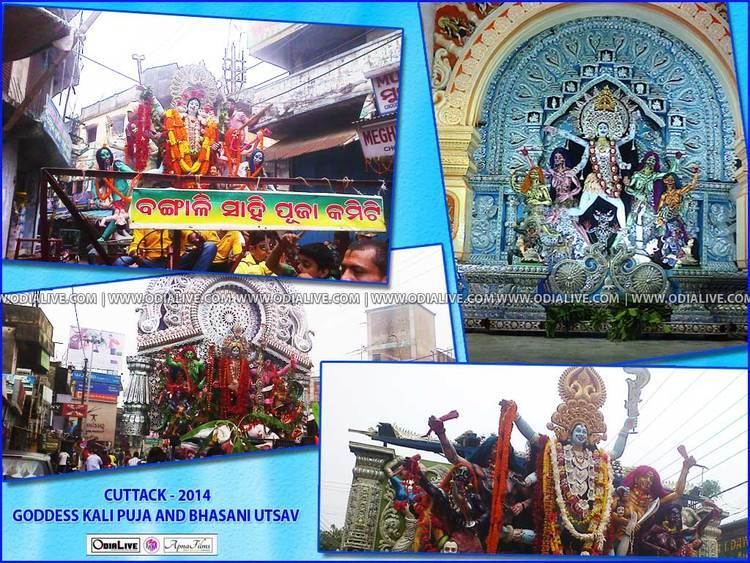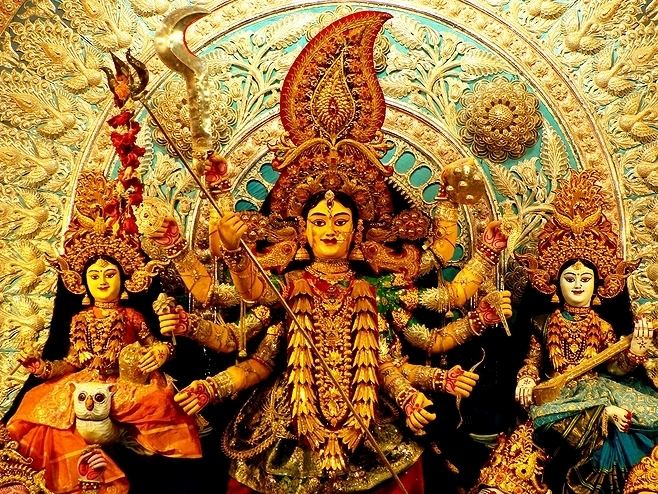Country India Population 534,654 (2001) Language spoken Oriya Area 43.7 km2 | State District Cuttack Founded King Markat Keshari Mayor Anita Behera | |
Colleges and Universities Ravenshaw University, Shri Ramachandra Bhanj Medical College, Dhaneswar Rath Institute of Engineering and Management Studies, Sri Sri University, Ajay Binay Institute of Technology | ||
Cuttack is the former capital and the second largest city in the eastern Indian state of Odisha. It is also the headquarters of the Cuttack district. The name of the city is an anglicized form of Katak which literally means The Fort, a reference to the ancient Barabati Fort around which the city initially developed. Cuttack is also known as the Millennium City as well as the Silver City due to its history of 1000 years and famous silver filigree works. It is also considered as the judicial capital of Odisha as the Odisha High Court is located here. It is also the commercial capital of Odisha which hosts a large number of trading and business houses in and around the city.
Contents
- Map of Cuttack
- Devotees throng chandi temple in cuttack odisha
- Durga puja at cuttackodisha see the silver filigree work decorations
- History
- Geography
- Culture
- Economy
- Places of interest
- Festivals
- Foodies rocky mayur are in cuttack
- References
Map of Cuttack
The old and the most important part of the city is centred on a spit of land between the Kathajodi River and the Mahanadi River, bounded on the southeast by Old Jagannath Road. The city, being a part of the Cuttack Municipal Corporation consisting of 59 wards. Cuttack stretches from Phulnakhara across the Kathajodi in the south to Choudwar in north across the Birupa River, while in the east it begins at Kandarpur and runs west as far as Naraj. The city is located at the central point of four rivers which are the distributaries of River Mahanadi; namely Mahanadi, Kathajodi, Kuakhai, Birupa and further Kathajodi is distributed into Devi and Biluakhai which often makes the geograpical area look like fibrous roots. Cuttack and Bhubaneswar are often referred to as the Twin-Cities of Odisha.
Devotees throng chandi temple in cuttack odisha
The metropolitan area formed by the two cities has a population of 1.68 million in 2014. Cuttack is categorised as a Tier-II city as per the ranking system used by Government of India.
Durga puja at cuttackodisha see the silver filigree work decorations
History
The earliest written history of Cuttack may go back to the Keshari dynasty. As stated by the distinguished historian Andrew Stirling, present-day Cuttack was established as a military cantonment by king Nrupa Keshari of Keshari dynasty in 989 CE. Stirling based his opinion on the Madala Panji, a chronicle of the Jagannath temple of Puri. The reign of Markata Keshari was distinguished for the stone embank built to protect the new capital from flood in 1002 CE.
Historical and archaeological evidence suggests Cuttack becoming capital of a kingdom founded by Raja Anangabhimadeva III of Ganga dynasty in 1211 CE. After the end of Ganga rule, Odisha passed to the hands of the Suryavamsi Gajapati dynasty (1434–1541 CE) under whom Cuttack continued to be the capital of Odisha. After the death of Raja Mukunda deva, the last Hindu king of Orissa, Cuttack first came under Muslim rule and later under Mughals.
By 1750, Cuttack came under Maratha rule and it grew fast as a business centre being the convenient point of contact between the Marathas of Nagpur and the English merchants of Bengal. It was occupied by the British in 1803 and later became the capital of Odisha division in 1816. From 1948 onwards, when the capital was shifted to Bhubaneswar, the city remained the administrative headquarters for the state of Odisha.
Remnants of an old fort called Barabati Killa still exist in the heart of Cuttack with the moat around the fort. Nearby is a modern stadium called the Barabati Stadium, host to many national and international cricket matches. Recently the stadium was upgraded with floodlights for facilitating Day and Night matches.
The introduction of the Sharadiya Utsav tradition in the city dates back to the visit of Saint Chaitanya in the 16th century when the consecration of the idol of Durga by using the mask pattern was conducted in his presence at Binod Behari Devi Mandap.
Recent growth of the city has resulted in expansion across the Kathajodi River and a newer township towards the head of the delta formed between the tributary Kathajodi river and the main river Mahanadi has come up by the name of Markat Nagar (popularly known as CDA by the local residents) which is spread across 2000 acres. CDA has 15 sectors out of which 11 are residential & has population around 150,000. Jagatpur & Mahanadi vihar are two other township in the City. Mahanadi Vihar is the first satellite city project in Odisha. Cuttack is referred to as a city with Baaban Bazaar, Teppan Galee i.e. this is the city of 52 markets and 53 streets which is told by people of Odisha for the largeness of this city. Naranpur is another satellite township coming up in Trishulia, on the other side of Kathajodi River.
Geography
Cuttack is located at 20°31?23?N 085°47?17?E and has an average elevation of 36 metres (118 ft). The city is spread across an area of 192.5 km2 (74 sq mi). The city, being a Cuttack Municipal Corporation which consists of 59 wards. The city stretches from Phulnakhara in south to Choudwar in north and Kandarpur in east to naraj in west while main city is located at the apex of the Mahanadi River delta. Apart from Mahanadi, four of its distributaries also run through the city. The distributaries include Mahanadi, Kathajodi, Kuakhai and Birupa where Kathajodi further has two distributaries; the right being Devi while the left is Biluakhai. Mahanadi runs through the city on the northern side separating the main city from the Jagatpur Industrial Area. The Kathajodi river forms a riverine island of Bayalis Mouza after separating the main city from Gopalpur. The Kuakhai river separates the southern part of the city into two-halves, namely Pratap Nagri and the new township of Naranpur. The Kuakhai runs throughout the south of the city along Phulnakhara before entering Bhubaneswar. The Birupa river runs through the north of Jagatpur Industrial Area separating it from Choudwar. There are numerous ponds known as (pokharis) in the city that store rain water. The Mahanadi provides much of the drinking water to the city.
Culture

Cuttack also houses several churches that include Holy Rosary Church, Oriya Baptist Church etc.
Economy
Cuttack is widely known as the commercial capital of Odisha. It is believed to have the largest GDP among all cities in Odisha due to its large business houses and wide range of industries ranging from ferrous alloys, steel and logistics to agriculture and traditional industries like textiles and handicrafts. There are many trading houses in the city renowned nationally and internationally. The Paradip Port which is around 85 km from the city facilitates this process.
Places of interest
The Barabati Fort is a 14th-century castle built by the Ganga dynasty ruler Maharaja Markata Keshari. The ruins of the fort still remain with its moat, gate and the earthen mound of the nine-storied palace, which evokes the memories of past days.
Festivals

Cuttack, being the aesthetic capital of Odisha for a long period, celebrates festivals from all religions with much fanfare and devotion.

All the other regular Indian festivals like Ratha Yatra, Raja, Ganesh Chaturthi, Vasant Panchami, Holi, Diwali, Chhath, Id, Good Friday, Christmas and the numerous festivals are celebrated here.
